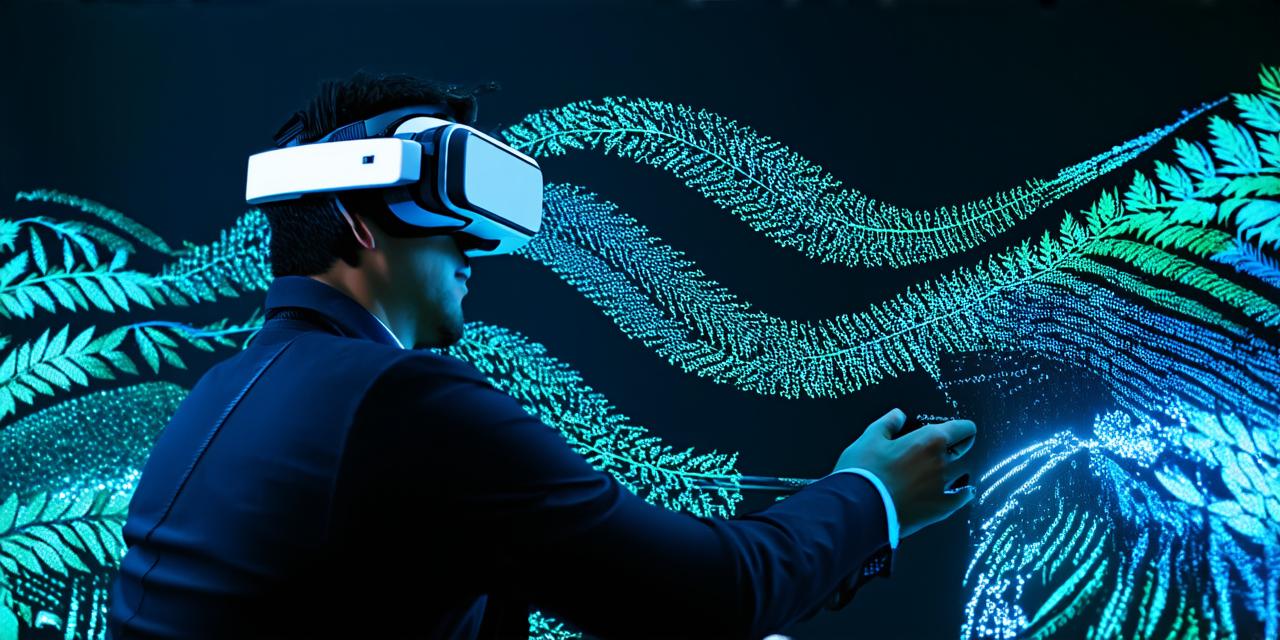Understanding Data in Virtual Reality
Data is an essential component of any application or system. It provides insights into user behavior, performance metrics, and other important factors that can help developers improve their products and services. In the context of VR, data can be used to optimize the experience for users, track usage patterns, and identify areas for improvement.
Virtual Reality Alters Data
One of the key ways that VR alters data is by providing developers with new opportunities for data collection. By creating a simulated environment, VR allows developers to collect data in ways that would be difficult or impossible in the real world. For example, researchers have used VR to study how people respond to different types of stimuli in controlled environments. This has allowed them to gather valuable insights into human behavior and cognitive processes that can be applied to a wide range of fields, from marketing to neuroscience.
Another way that VR alters data is by creating more immersive and engaging experiences for users. By allowing users to interact with virtual objects and environments in a more natural and intuitive way, VR can help increase user engagement and satisfaction. This, in turn, can lead to increased data collection and analysis, as users are more likely to provide feedback and participate in surveys and other types of research.
Virtual Reality Converts Data
In addition to altering data, VR can also convert it into new forms that are more useful for analysis and decision-making. For example, by using machine learning algorithms to analyze sensor data from VR headsets, developers can gain insights into how users interact with virtual objects and environments. This information can be used to optimize the user experience, identify areas for improvement, and inform product design decisions.
Real-Life Examples of Virtual Reality and Data
There are many real-life examples of how VR has been used to alter and convert data across various industries. One example is the use of VR in education. By creating virtual classrooms and simulations, educators can provide students with more immersive and engaging learning experiences that can help improve their understanding of complex concepts. This, in turn, can lead to improved performance on standardized tests and other types of assessments.
Another example is the use of VR in marketing. By creating virtual product demonstrations and interactive advertisements, marketers can provide consumers with more engaging and memorable experiences that can help increase brand awareness and sales. This, in turn, can lead to increased data collection and analysis, as marketers seek to understand how consumers respond to different types of messaging and promotions.
FAQs
1. How does virtual reality alter and convert data?
Virtual reality alters and converts data by providing developers with new opportunities for data collection, creating more immersive and engaging experiences for users, and converting data into new forms that are more useful for analysis and decision-making.
2. What types of data can be collected in virtual reality?
Sensor data, user input, and behavioral data can all be collected in virtual reality. Sensor data includes information about the user’s physical environment, such as motion, location, and orientation. User input includes data from controllers or other devices used to interact with the virtual world. Behavioral data includes information about how users interact with objects and environments within the virtual world.
3. How has virtual reality been used in education?
Virtual reality has been used in education to provide students with more immersive and engaging learning experiences that can help improve their understanding of complex concepts. This, in turn, can lead to improved performance on standardized tests and other types of assessments.
4. How has virtual reality been used in marketing?
Virtual reality has been used in marketing to create virtual product demonstrations and interactive advertisements that provide consumers with more engaging and memorable experiences. This, in turn, can help increase brand awareness and sales, and lead to increased data collection and analysis.
Summary
Virtual reality is a powerful technology that is changing the way we interact with data. By providing developers with new opportunities for data collection, creating more immersive and engaging experiences for users, and converting data into new forms that are more useful for analysis and decision-making, VR has the potential to revolutionize many industries. As virtual reality continues to evolve, we can expect to see even more innovative uses of this technology in the future.
